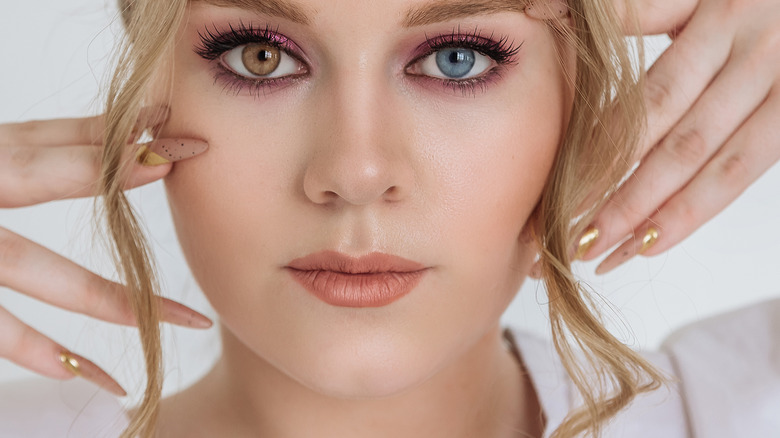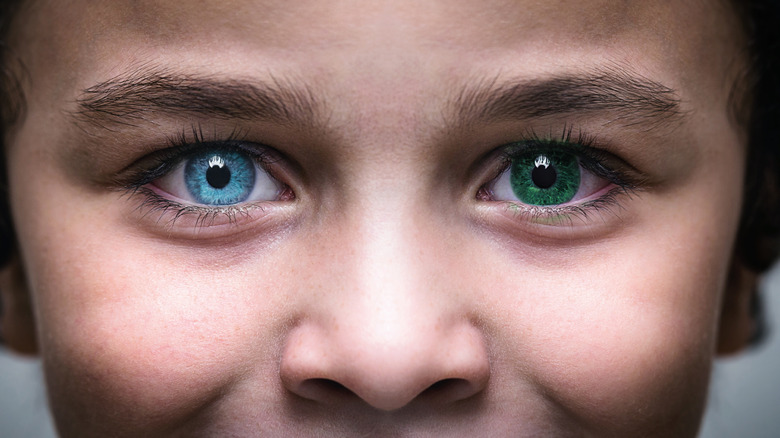What It Really Means When You Have Two Different Colored Eyes
Have you ever seen someone with two different eye colors? Perhaps each eye was a different color, or one eye boasted two different shades. If you have seen this, you may have assumed they were just wearing colored contacts, but that is not necessarily the case. It's possible they may have heterochromia, a phenomenon that is fairly common in certain animal species such as dogs, but not so much in humans.
According to the American Academy of Ophthalmology, there are many potential causes behind heterochromia. Sometimes, a person is born that way, in which case there are typically no other symptoms. Susan J. Gross, co-director of the Division of Reproductive Genetics at the Montefiore Medical Center, explains via Scientific American that if someone is born with heterochromia, it is likely due to an abnormality in the expression of genes that influence eye color. All this means is that there is simply a difference in pigmentation between the eyes (or within one eye). It is generally nothing to worry about, but rather something that makes you unique. However, there are certain situations in which heterochromia may be a sign of something deeper.
In some cases, heterochromia may be a result of certain medical conditions
Generally speaking, heterochromia is no more concerning than a birthmark. But in some people, it can be a symptom of Waardenburg syndrome, Horner's syndrome, Sturge-Weber syndrome, or Hirschsprung's disease. Other potential causes include Parry-Romberg syndrome, Bourneville disease, von Recklinghausen disease, and Bloch-Sulzberger syndrome. For some people, heterochromia can be a manifestation of piebaldism, a condition in which certain areas of the hair or body lack melanocytes — cells that produce melanin and thus pigment (via American Academy of Ophthalmology).
If you develop heterochromia as an adult, that can be more concerning. Discoloration can be caused by an eye injury or surgery, bleeding within the eye, swelling, or tumors (either malignant or benign). It can also be caused by a number of conditions such as glaucoma or diabetes. See your doctor to rule out any underlying conditions.
If your child is born with heterochromia, it may also be a good idea to see a doctor to rule out any potential disorders, but keep in mind that it probably is nothing to worry about. It is just one more variation that contributes to the wonderful diversity exhibited by the human race.


